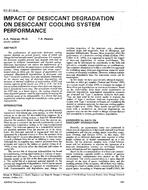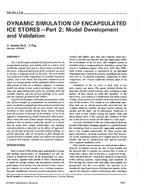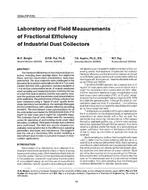Click here to purchase
Several mould models, aiming to predict the possibility for mould growth on various building materials, have been presented during the last 10-15 years. These are available as postprocessors in hygrothermal calculation programs, as stand-alone programs or are documented as scientific or conference papers. In addition to input of relative humidity (RH) and temperature data, some assumptions need to be made by the end user on, for example, material properties. Previous evaluations of performance have focused on comparisons on theoretical differences in outcome. In this study, RH and temperature measurements from a field study was used as input in different mould models. The results, i.e. if there is a possibility for mould growth or not, were compared to observations of mould growth on test specimens of building materials exposed in the field study where the measurements took place. This study was conducted as a round robin test, part of the Horizon 2020 project RIBuild. Partners chose which model to use and the values of different input parameters. Results show that in extreme cases, very wet or very dry conditions, the models predict accurately. However, when the RH and temperature varied a lot, daily and yearly, the outcome of most models did not agree with the real analysed results; in general they predicted no mould growth when there was extensive growth, with one exception where the model predicted correct in most of the cases. Also, the choices on parameters by different partners influenced the results. One conclusion is that results of the models often vary depending on end user and the usability may be limited. More knowledge is also needed on how periodic hygrothermal variations should be considered in the models.
Citation: Thermal Buildings XIV 2019
Product Details
- Published:
- 2019
- Number of Pages:
- 10
- Units of Measure:
- Dual
- File Size:
- 1 file , 1.9 MB
- Product Code(s):
- D-Bldgs19-073


